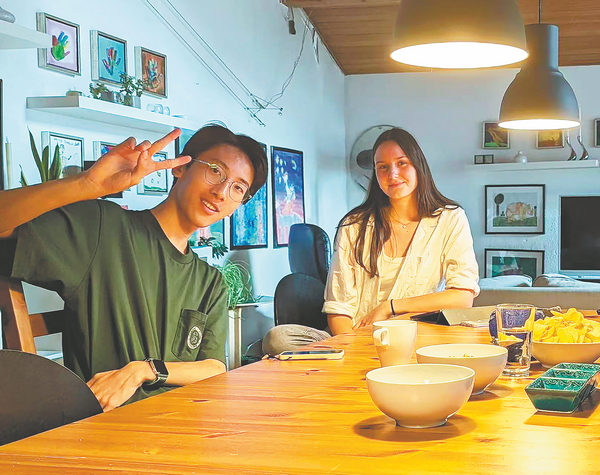

From Aug 18 to 31, we visited Clara-Schumann-Gymnasium in Bonn, Germany, for the first time. Instead of feeling shy and hesitant, we were excited because we had already connected online in April while working together on an environmental project.
The trip was an exchange program between Clara-Schumann-Gymnasium and our school, Hangzhou Entel Foreign Language School. Our mission was to reduce the human carbon footprint by designing sustainable solutions — from environmentally friendly buildings to eco-friendly shirts and reusable cardboard boxes.
We worked closely with the German students, combining our knowledge to tackle the issue from multiple angles.
This year marks the 10th anniversary of our school's partnership with Clara-Schumann-Gymnasium, as well as the comprehensive strategic partnership between China and Germany. This exchange was more than just a chance to explore a new country — it was a celebration of a longstanding tradition between our schools, filled with cultural surprises as we focused on our project.
After arriving in Germany, we were immediately struck by how advanced the country was in its environmental efforts. Many of the buildings we visited had ultra-thick insulation and innovative air circulation systems instead of traditional air conditioning.
During a tour of Ludwig Maximilian University, we learned that many of their structures were built from wood, which is not only faster to construct but also leaves a smaller environmental footprint compared to concrete and steel.
These insights deeply influenced our project, where we focused on designing buildings that minimized heat loss and incorporated renewable energy solutions.
Our collaboration with the German students was enriching not just on the technical side, but also through our daily interactions — working together, exchanging ideas, and learning from each other.
For example, during one session, we experimented with different computer-aided design models, trying to create a building structure that could maximize solar input while ensuring thermal efficiency.
It was fascinating to see how the German students approached problem-solving differently from us. They were meticulous and methodical, while we tended to brainstorm and adapt quickly. These contrasting approaches complemented each other, leading to a richer and more innovative final product.
This human connection extended to my experience with my host family. They had an impressive collection of teas — something I hadn't expected to find in Germany. Coming from China, where tea is a cultural cornerstone, I was surprised by how much my host family valued it.
Their cabinet was filled with varieties like Earl Grey, herbal blends, and even green teas. Each morning at breakfast, we would laugh and compare tea traditions, realizing that, despite our geographical distance, some small but meaningful connections bridged our cultures.
By the end of the project, we had not only learned about sustainable design but also experienced the power of cultural exchange firsthand. Through our shared environmental goals, we built friendships that transcended language and national boundaries.
On the last day, my classmate Fu Ziyi reflected on the experience, saying, "This trip wasn't just about reducing our carbon footprint — it was about understanding how different countries can work together, learn from each other, and make the world a better place."
Written by Jiang Ziyi, 17, a student at Hangzhou Entel Foreign Language School. Edited by his English teacher Feng Yineng.